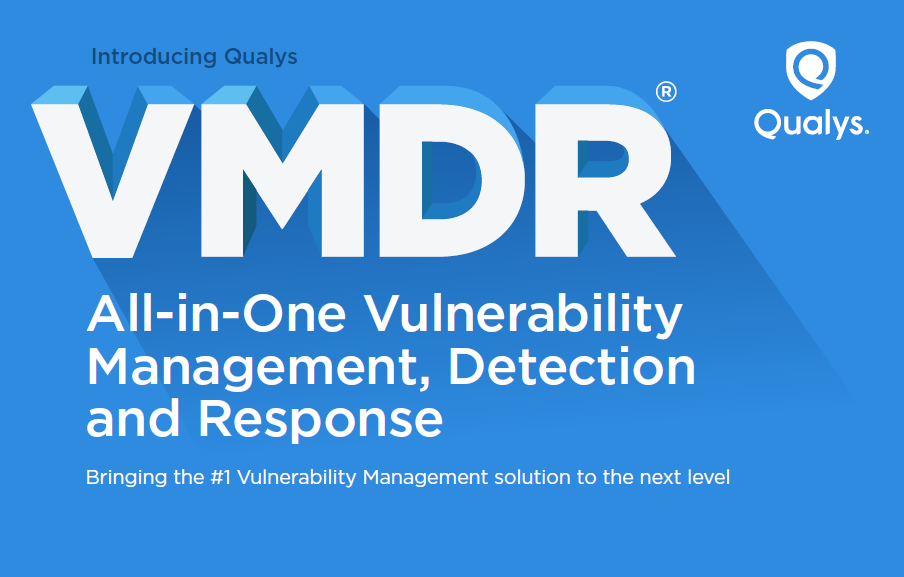Why vulnerability management is crucial right now
Proactive, watertight security is essential in the age of remote working and digital transformation

With so many companies managing increasingly diverse IT estates and complex working setups, taking a proactive approach to security is now more important than ever – and that means addressing vulnerabilities before they have a chance to cause big issues.
Vulnerabilities are weak points that can leave your systems open to threats, either in the form of external attacks or internal errors that expose company data. While you and your staff need to be mindful of the types of threat out there, it can only take one missed vulnerability for something to slip through and cause immense damage to your business.
Plugging any holes in your infrastructure is, therefore, a crucial protection against attack. Once you’ve addressed vulnerabilities, there’s less room for error and hackers become less of a threat.
What are some of the key vulnerabilities?
Unsupported hardware and software can leave your systems vulnerable. When companies have put significant investment into devices, it’s tempting to keep them around as long as possible to make the most of that investment. But this can come back to haunt your organisation if you get to the point where that device is no longer supported by the manufacturer, meaning it will no longer be eligible for security updates. Even if you have new equipment, you need to ensure that everything running on it is regularly updated and patched.
RELATED RESOURCE

Introducing VMDR: Vulnerability Management, Detection and Response
The all-in-one vulnerability management service
Inadequate endpoint security is another common vulnerability. Ensuring that every device accessing your data has good security features, such as anti-malware software and browser isolation, is a crucial way of minimising threats. It is also vital that you know who is accessing your data and why – and that means your company information needs more than just a password to protect it. Limiting and monitoring access with secure authentication and authorisation processes is key. There is also a big risk here if you allow your employees to use their own personal devices for work. A carefully monitored BYOD (bring your own device) scheme, should give you visibility of all devices being used to access company data.
Misconfiguration is a common mistake that can have major consequences. While applying the right security controls may seem obvious, a simple error can give criminals plenty of routes in to steal data, install malware or hijack devices – they don’t even need to hack into the system, it’s open and waiting for them. There are plenty of headline-grabbing recent examples of this. In March 2020, it was reported that the personal details of 900,000 Virgin Media customers were left accessible online for 10 months due to a misconfigured database. In 2018, a misconfigured app exposed NASA employees' personal details as well as details of ongoing projects. And in 2019, in one of the biggest ever data breaches, an email validation service exposed up to two billion records by simply failing to turn on an authentication control.
What is vulnerability management?
Vulnerability management is a critical aspect of business security. It is the cyclical, four-step process of discovering, reporting, prioritising and responding to vulnerabilities in your IT estate. The four phases are:
Get the ITPro daily newsletter
Sign up today and you will receive a free copy of our Future Focus 2025 report - the leading guidance on AI, cybersecurity and other IT challenges as per 700+ senior executives
- Discovering – Identifying and evaluating all assets in your IT estate. This means looking at all hardware and software connected to your network and determining how up to date and secure it is.
- Reporting – Compiling a detailed report of all assets connected to your network, which clearly shows which systems are most vulnerable. The most vulnerable systems include those that are unsupported or in need of patching, especially if they are connected to critical data.
- Prioritising – Focusing on the most urgent vulnerabilities and addressing them first. Priorities can vary from business to business, depending on budget and resources, but it generally makes sense to prioritise vulnerabilities which pose significant risks but are not vastly expensive or time-consuming to fix. There may be flaws that you choose not to address at all (for affordability or low-risk reasons), but these should still be on your radar to monitor closely in case circumstances change.
- Responding – Once you’ve decided what to prioritise, you need to quickly and effectively fix the critical vulnerabilities. This can be as quick and easy as installing updates or it may mean an overhaul of your software and hardware if you’re using unsupported tools and equipment.
The cycle is then repeated to catch any new issues or updates that need to be made. With technology consistently being updated and trialled, this ensures that you stay on top of everything and your system stays in the best possible shape.
Why is vulnerability management so important right now?
Digital transformation has been the big talking point of the last few years, and businesses are online more than ever before. Innovation in the digital space is essential for companies to stay relevant and competitive in the 21st century, but this inevitably leads to IT estates that are more complex and therefore more difficult to secure.
Then you have the rise of remote working, which was already gaining traction but propelled forward by the COVID-19 crisis. This brings about its own challenges, from the potential vulnerabilities opened up by a lack of a firewalled, central IT monitored network to the difficulties of enforcing best practices and ensuring staff are aware of threats.
All of this combined means that many organisations are now operating a highly complex and ever-evolving digital estate, which their employees can access across the country, if not the world. As ways of working continue to shift and technologies evolve at an impressive rate, it’s important to stay on top of everything. The proactive approach of vulnerability management ensures that you’re always one step ahead of threats.
-
 Should AI PCs be part of your next hardware refresh?
Should AI PCs be part of your next hardware refresh?AI PCs are fast becoming a business staple and a surefire way to future-proof your business
By Bobby Hellard Published
-
 Westcon-Comstor and Vectra AI launch brace of new channel initiatives
Westcon-Comstor and Vectra AI launch brace of new channel initiativesNews Westcon-Comstor and Vectra AI have announced the launch of two new channel growth initiatives focused on the managed security service provider (MSSP) space and AWS Marketplace.
By Daniel Todd Published
-
 Hackers are targeting Ivanti VPN users again – here’s what you need to know
Hackers are targeting Ivanti VPN users again – here’s what you need to knowNews Ivanti has re-patched a security flaw in its Connect Secure VPN appliances that's been exploited by a China-linked espionage group since at least the middle of March.
By Emma Woollacott Published
-
 Broadcom issues urgent alert over three VMware zero-days
Broadcom issues urgent alert over three VMware zero-daysNews The firm says it has information to suggest all three are being exploited in the wild
By Solomon Klappholz Published
-
 Nakivo backup flaw still present on some systems months after firms’ ‘silent patch’, researchers claim
Nakivo backup flaw still present on some systems months after firms’ ‘silent patch’, researchers claimNews Over 200 vulnerable Nakivo backup instances have been identified months after the firm silently patched a security flaw.
By Solomon Klappholz Published
-
 Everything you need to know about the Microsoft Power Pages vulnerability
Everything you need to know about the Microsoft Power Pages vulnerabilityNews A severe Microsoft Power Pages vulnerability has been fixed after cyber criminals were found to have been exploiting unpatched systems in the wild.
By Solomon Klappholz Published
-
 Vulnerability management complexity is leaving enterprises at serious risk
Vulnerability management complexity is leaving enterprises at serious riskNews Fragmented data and siloed processes mean remediation is taking too long
By Emma Woollacott Published
-
 A critical Ivanti flaw is being exploited in the wild – here’s what you need to know
A critical Ivanti flaw is being exploited in the wild – here’s what you need to knowNews Cyber criminals are actively exploiting a critical RCE flaw affecting Ivanti Connect Secure appliances
By Solomon Klappholz Published
-
 Researchers claim an AMD security flaw could let hackers access encrypted data
Researchers claim an AMD security flaw could let hackers access encrypted dataNews Using only a $10 test rig, researchers were able to pull off the badRAM attack
By Solomon Klappholz Published
-
 A journey to cyber resilience
A journey to cyber resiliencewhitepaper DORA: Ushering in a new era of cyber security
By ITPro Published